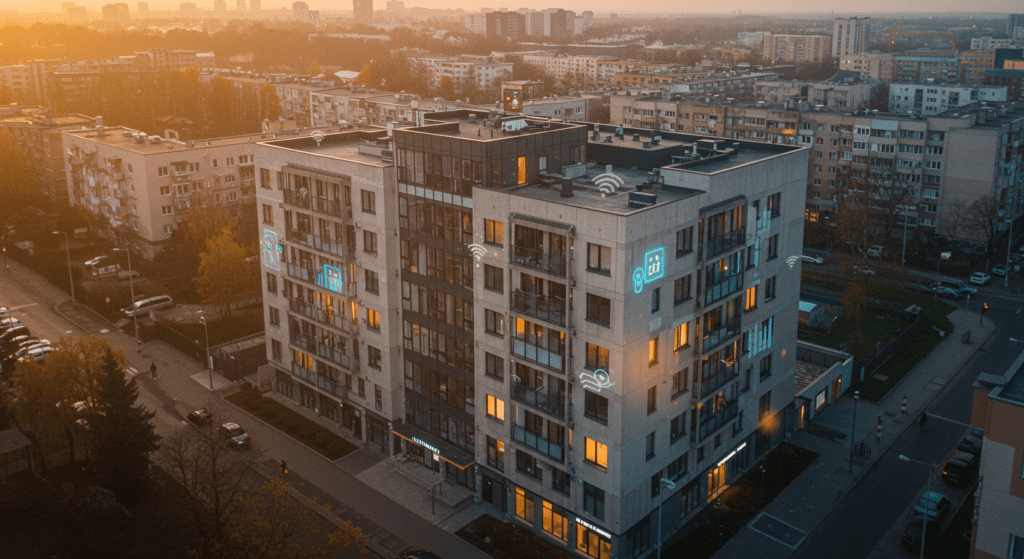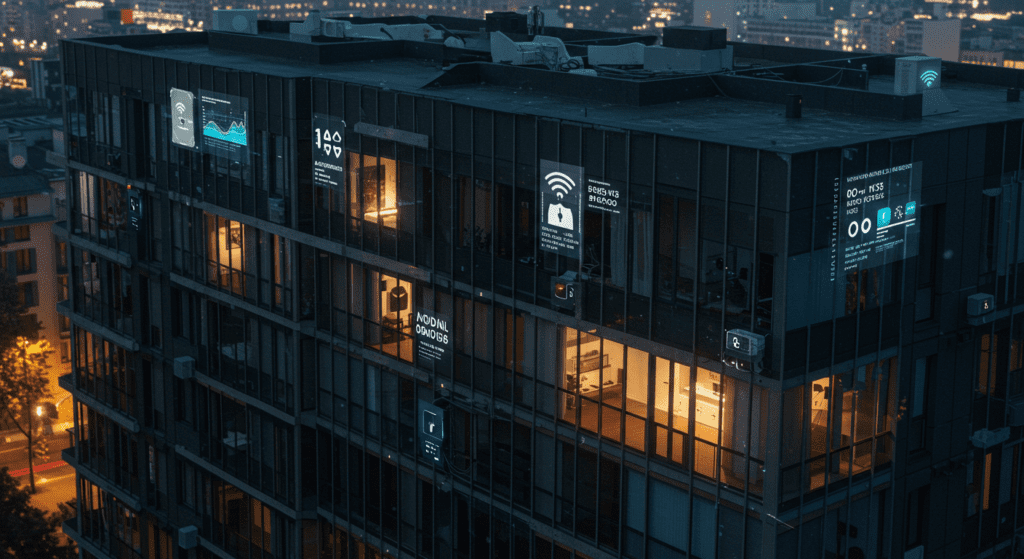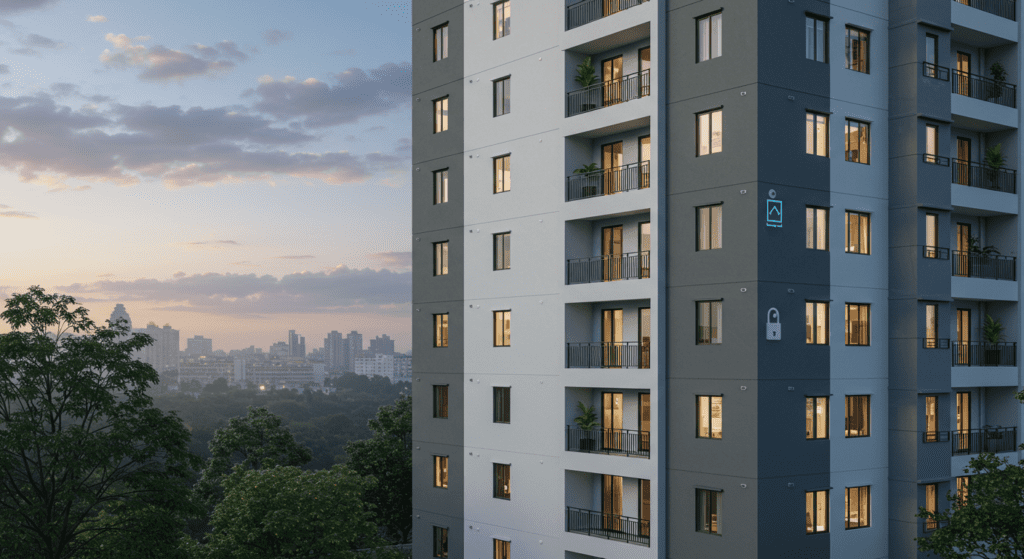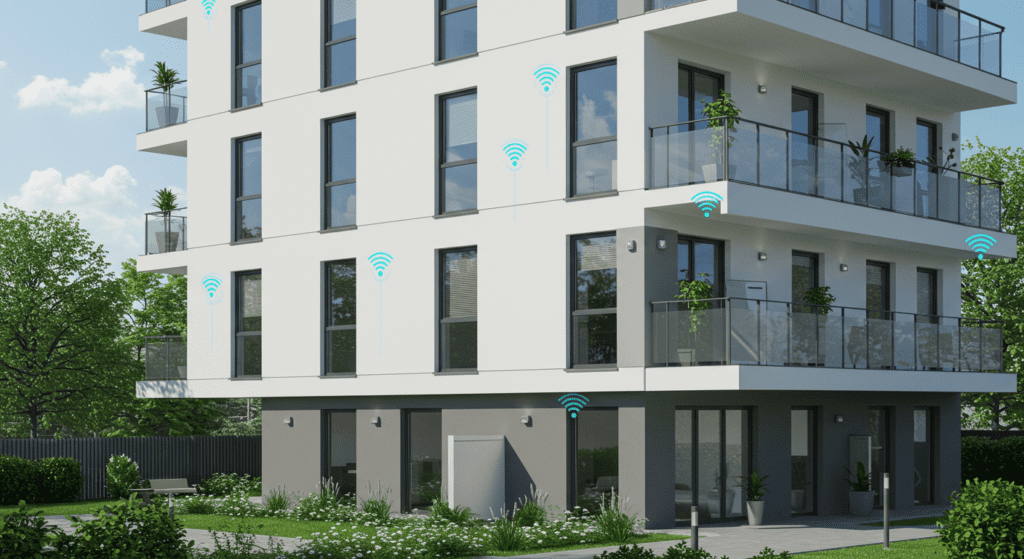- Future Trends in P&C Insurance for Apartment Buildings: An Overview
- The Growing Role of Technology in Risk Assessment
- Data Analytics and Its Impact on Policy Pricing
- Cybersecurity Considerations in Apartment Building Insurance
- Climate Change and Natural Disaster Preparedness
- Regulatory Shifts and Their Influence on the Insurance Market
- Smart Home Technology and Connected Systems
- The Rise of Personalized Insurance Solutions
- Innovative Claims Processing and Customer Engagement
- Looking Ahead: What the Future Holds for P&C Insurance in Apartment Buildings
1. Future Trends in P&C Insurance for Apartment Buildings: An Overview
The property and casualty insurance landscape is rapidly evolving, and apartment building insurance is no exception. As technology advances and external pressures like climate change and shifting regulations become more pronounced, the sector is compelled to adapt. This article delves into key developments shaping the future of P&C insurance for apartment buildings, exploring everything from enhanced risk assessment to innovative customer engagement.

2. The Growing Role of Technology in Risk Assessment
Technology plays a transformative role in risk assessment across the insurance industry. Traditional methods, based on historical data and generalized models, are giving way to more dynamic approaches. Advanced sensors, IoT devices, and real-time monitoring systems now capture critical data that insurers use to predict potential risks more accurately. For apartment buildings, this means not only identifying structural vulnerabilities but also anticipating issues such as water leaks, fire hazards, and general wear in communal areas.
The integration of remote sensing and machine learning algorithms allows insurers to assess risks at a granular level. This innovative approach offers benefits for both property managers and policymakers by reducing potential liabilities. As a result, apartment building owners can implement timely preventive measures while insurers can structure policies that reflect actual risk profiles, leading to fairer premiums and enhanced coverage.
3. Data Analytics and Its Impact on Policy Pricing
One of the most significant benefits of embracing modern technology in the insurance industry is the wealth of data available for analysis. Data analytics helps insurers sift through vast amounts of information to determine risk factors and set policy prices accordingly. For apartment buildings, factors such as location, age of the building, maintenance records, and occupancy patterns can now be incorporated into pricing models.
By employing sophisticated software tools and predictive analytics, insurers can adjust premiums with greater precision. This not only improves the profitability of insurance companies but also helps building owners benefit from competitive rates based on their unique risk profiles. Leveraging data analytics also paves the way for continuous monitoring, allowing companies to update premiums in real-time as risk factors evolve.

4. Cybersecurity Considerations in Apartment Building Insurance
In today’s digital era, cybersecurity is critical for insurers and property owners alike. As apartment buildings incorporate smart systems and networks for security, energy management, and communications, they become potential targets for cyberattacks. Insurers now face the twin challenge of securing sensitive customer data and understanding vulnerabilities within the insured properties.
Insurance policies are gradually evolving to address cyber risks comprehensively. Apart from traditional coverage, dedicated endorsements for cyber incidents are becoming more common. By ensuring that both property owners and insurers are prepared for data breaches, ransomware attacks, and other digital threats, the industry can significantly reduce financial loss and maintain consumer trust.
5. Climate Change and Natural Disaster Preparedness
Climate change has altered the dynamics of risk, making natural disasters more common and severe. For apartment buildings, areas prone to hurricanes, floods, and wildfires have become particularly challenging to insure. Insurers are now adopting forward-thinking strategies to address these evolving risks.
Emphasizing natural disaster preparedness, insurers are integrating climate models into their assessment algorithms. This allows them to foresee potential events and adjust policies appropriately. Additionally, property owners are encouraged to invest in preventive measures like improved drainage systems, fire-resistant materials, and structural reinforcements. By coupling advanced climate data with proactive property management practices, the future of apartment building insurance looks more resilient and adaptive.

6. Regulatory Shifts and Their Influence on the Insurance Market
The insurance sector is profoundly impacted by regulatory frameworks. In recent years, governments have introduced numerous changes aimed at protecting consumers and fostering market stability. These regulations often require insurers to maintain adequate capital reserves and adhere to strict risk management protocols.
For apartment building insurance, tighter regulations mean more rigorous underwriting processes and transparency in policy pricing. Although these changes sometimes pose challenges for insurers, they ultimately lead to a more stable and trustworthy market. Regulatory shifts can also drive innovation, compelling companies to adopt new technologies and refine processes that align with legal standards and ethical practices.
7. Smart Home Technology and Connected Systems
The rise of smart home technology has revolutionized the residential landscape, and apartment buildings are no exception. Modern buildings are increasingly equipped with interconnected devices such as smart thermostats, automated lighting systems, and advanced security cameras. These innovations not only enhance resident comfort and convenience but also serve as valuable tools for risk management.
Insurers now benefit from the real-time monitoring capabilities offered by connected systems. This technology can alert property managers to potential issues before they result in significant damage, reducing claims frequency and cost. By integrating smart home data into their risk models, insurance companies are able to offer nuanced policies that account for the preventive measures already in place. Consequently, building owners can enjoy reduced premiums and better-tailored coverages.

8. The Rise of Personalized Insurance Solutions
Personalization stands as a key competitive differentiator in many industries, and P&C insurance is quickly catching up. Personalized insurance solutions allow providers to tailor policies based on the specific characteristics of each apartment building. Instead of relying on a one-size-fits-all approach, insurers analyze building-specific factors such as construction quality, occupancy trends, local crime rates, and even the presence of smart devices.
This targeted approach offers numerous benefits. Policyholders receive premiums that accurately reflect their risk, without overpaying for unnecessary coverage. Moreover, personalized policies help insurers minimize loss exposures by incentivizing property owners to adopt better risk management strategies. As technology continues to refine these assessments, the potential for even more customized insurance products grows, fostering a more customer-centric market.
9. Innovative Claims Processing and Customer Engagement
Innovation in claims processing is transforming how insurers interact with policyholders. Digital claims platforms, supported by mobile apps and online portals, offer apartment building owners a faster, more efficient way to report incidents and monitor claim status. This increased transparency leads to improved customer satisfaction and helps insurers manage risks more effectively.
Leveraging artificial intelligence and machine learning, insurers can process claims with unprecedented speed. Automated systems that analyze damage through images and data reduce the need for manual intervention while ensuring that legitimate claims are handled quickly. Enhanced customer engagement through digital channels further solidifies trust between insurers and property owners, making the claims process not only faster but also more predictable and fair

10. Looking Ahead: What the Future Holds for P&C Insurance in Apartment Buildings
The future of property and casualty insurance for apartment buildings is one of continuous evolution. Four key trends promise to redefine the sector: technological integration, data-driven decision-making, environmental risk management, and customer-centric innovation. As insurers increasingly rely on advanced tech tools and comprehensive data analytics, the scope and accuracy of risk assessment will improve, enabling more tailored and cost-effective policies.
Moreover, the ongoing transformation in claims processing and customer engagement signals a move towards greater transparency and efficiency. In an era where data breaches and cyber threats are becoming more prevalent, robust cybersecurity measures are essential. As a result, future insurance products will likely include dedicated coverages for digital risks, reflecting the increasingly interconnected nature of modern buildings.
Regulatory changes will continue to shape the market by pushing insurers to adopt sustainable practices and maintain high standards of accountability. Meanwhile, climate change remains a persistent factor influencing policy metrics. As weather patterns become more unpredictable, proactive risk management instruments will be indispensable for safeguarding apartment buildings against natural disasters.
Additionally, personalized solutions tailored to individual building needs are expected to dominate the market. The benefits are clear: lower premiums for conscientious property managers and more comprehensive coverage options that reflect real-time risk conditions. With smart home technology and connected systems providing continuous feedback on property safety, these dynamic policies will become the norm.
11. Conclusion
In conclusion, the landscape of P&C insurance for apartment buildings is shifting towards a future that is more adaptive, data-driven, and consumer-focused. Building owners, insurers, and regulators all stand to benefit from embracing these transformative trends. With technology at the heart of risk assessment and customer engagement, the industry is moving towards a model that not only protects physical property but also offers enhanced digital safeguards.
Innovation, efficiency, and sustainability are set to define the next era of apartment building insurance. As stakeholders navigate the complexities of modern risk management, one constant remains: the commitment to providing robust, responsive insurance solutions that meet the demands of an ever-changing world. This commitment ensures that apartment buildings continue to be well-protected, while also paving the way for a safer, more secure future in the face of emerging challenges.
